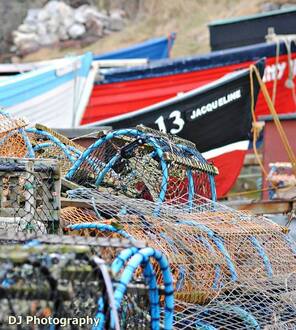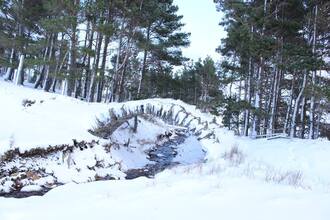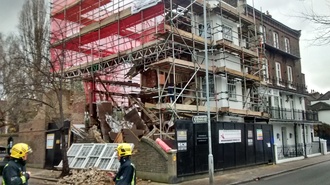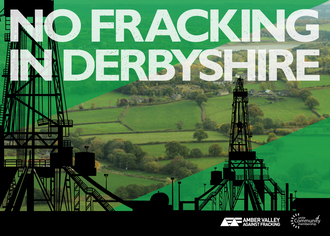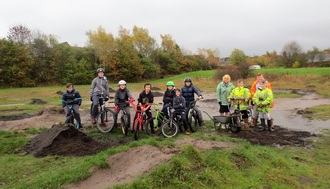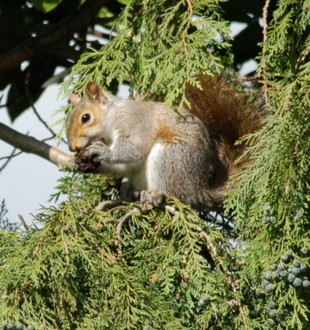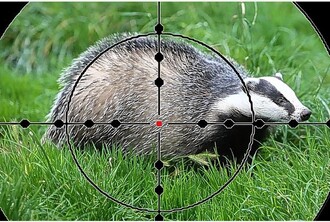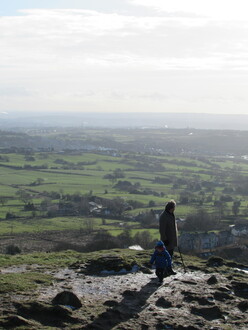-
Keep Barnsley Frack FreeWe are concerned that fracking could: • Contaminate our water supply • Pollute the air with hazardous chemicals • Cause earthquakes • Reduce the value of our homes • Increase our insurance premiums • Make our roads less safe by increasing heavy traffic • Leak methane, which is a potent greenhouse gas 80 times more powerful than carbon dioxide • Cause illness in local populations • Increase noise and light pollution from drilling operations and traffic movement. Fracking is bad for our environment, bad for our communities and we call upon Barnsley Council to reject fracking in Barnsley.2,896 of 3,000 SignaturesCreated by Andy Hemingway
-
Save the fishing community of Cove HarbourLandowner Pralhad Kohle is trying to prevent fishermen at Cove Bay from using their boats, as people in the community have done since the 1790s. He is trying to evict them and has blocked access with boulders. Cove Bay would not be the place that it is without the harbour. Cove was built and founded on fishing and removing the boats would remove the heart of the village. It would take away people's livelihoods and remove a natural resource from future generations. The local community deserve to keep their heritage, and be allowed to enjoy it.11,316 of 15,000 SignaturesCreated by Claire Adam
-
stop clear felling trees in cairgorms national parkAnimals need woodland habitat. Riversides need trees to help prevent flooding. Humans need trees and the oxygen provided. A lot of these woods have been ignored for about half a century and are now 'semi-natural'. Suddenly timber is very valuable again (woe to woodchip boilers but that is another campaign...) Lovely Scots pine teeming with red squirrels and pine martins and cross bills and so much other wildlife. My home is right beside one of these woods which is earmarked for clearfelling the last of the trees in the immediate area (Corgarff, Aberdeenshire). It is unbearable to imagine the woodland gone and this seems to be the norm across the park. How can we do this in a national park? We criticise people in other parts of the world for clearing forest and still we do it in our own national parks? Lets stop this!!!371 of 400 SignaturesCreated by Sally Scott
-
Stop intrusive basement developmentsThe threat to neighbourhoods and businesses suffering this plague of development show planning rules to be far too heavily weighted in favour of developers. Local residents and businesses, ambushed by ambitious plans, are now often locked out of any consultation process - their rights ignored. Local councils, who they count on to represent their interests are increasingly unwilling to fund legal appeals against their own refusals of planning consent - so give in. Now, not only are homes and businesses put at risk but the quality of life of entire neighbourhoods is vandalised. Innocent property owners should not have to mortgage their livelihoods to fight off the life-style expansions imposed by their neighbours and absent developers. This is wrong and needs to change nationally and locally. Legislation needs to be introduced to persuade or nudge a change in the current property abusing culture. The weight needs to shift in favour of those who need protection against the bullying financial demands of those who assume they can continue, and afford, to override and out-finance their innocent neighbours and local councils and, thereby, impose their encroachments on others. Somehow, a wholesale review of this clash needs to address and reform this injustice, where local authorities decide in favour of developments, regardless, because they are financially restricted, particularly through expensive appeals processes, in affording the costs incurred, to protect their constituents who innocently assume such local authorities might act in their civil interests – many are now disillusioned. As Air Studios fights for its survival, there are other fights against basement plans, including those of the owners of Admiral’s House to safeguard the heritage of Hampstead against plans by the owners of Grove Lodge and the residents of New End to stave off a 3 basement development by the owners of 29 New End. Countless others abound around the country. Something needs to be done against the tyranny of unsuitable basement developments.1,297 of 2,000 SignaturesCreated by Jessica Learmond-Criqui
-
No Fracking in Amber ValleyWe are told that Hydraulic Fracturing (Fracking) will create jobs and lower your energy prices. While this is extremely debatable and has been discredited by many authorities, there are many other environmental and economic facts to be considered. The detrimental effects of Fracking are well documented. Some of the key facts are as follows: Fracking increases local air pollution An increase in risk of pollution to local drinking water supplies Possible Risks of seismic activity Threatens natural habitats Fracking generates massive amounts of greenhouse gases Investments in Fracking blocks the development of renewable energy Increased traffic on roads from site vehicles Potential to lower the value of your house if located near a site for the above reasons Scotland, France and Germany have already banned Fracking. Please help give your support by signing this petition to let the local government that Amber Valley's constituents wish it to remain a Frack free area. Please also see details of our first meeting here: https://www.facebook.com/events/568058916702507/ Or here: https://you.38degrees.org.uk/events/fracking-in-amber-valley1,350 of 2,000 SignaturesCreated by Lee Burrows

-
Save Isleworth's Park Road Allotments from redevelopmentPark Road Allotment site is the last remaining part of Old Isleworth that is undeveloped. It offers the local community a much needed tranquil location in an otherwise urban setting. There have been allotment gardens on the site since at least 1915. Public Health England recognises the therapeutic benefits of gardening for people’s mental and physical well-being. The benefits of the site are not confined just to individual plot holders. • It is a wildlife haven: The site supports bats, newts, frogs, dragonflies, butterflies and too many birds to name. These creatures, once commonplace are increasingly rare in urban areas. • It has a major role in the production and promotion of biodiversity; plants and fruit trees depend on insects to pollinate them in order for there to be good crops. The site offers an abundant source of nectar rich plants for bees and butterflies. • The reduction of waste to landfill through composting, recycling and reusing materials. • There are learning opportunities for people of all ages who want to develop new skills and adopt a healthy lifestyle, supported through an active community garden and small garden for the local nursery school. Parents and grandparents bring children to the site; they are the next generation of gardeners. • It’s a space where children can be children; they can build camps, play pretend, weed and water their patches and be so exhausted they are asleep by 7pm. • With the increasing propensity for apartments with no individual garden space, it offers much needed outdoor space where it is possible to do more than sit and picnic. • The site forms part of the historic setting for the 600 year old All Saint’s Church. Once this tiny remaining part of Old Isleworth has been concreted over, it will be lost for all future generations. It is worth saving for everyone, now and in the future.3,113 of 4,000 SignaturesCreated by Sharon Probets

-
Save Kidsgrove's Recreation ParkNewchapel recreation area, known as Chinky Park is the only outdoor BMX track facility in the Kidsgrove ward. Kidsgrove teenagers, Tyler Cooper Moore and Dan worked hard to provide this outdoor facility so that the entire community could derive benefit from his outstanding achievement. Chinky Park is well-used by all members of the community on a daily basis and to sell off such a much-loved community area, would have dire consequences for all who live in Kidsgrove and surrounding area's. Margaret Astle is appalled that Cllr David Loades, Cllr Simon Tagg, Cllr Marion Reddish and Cllr Derek Huckfield voted to recommend that Chinky Park be sold-off to a developer to build 148 houses on a children's recreation ground. The four councillors do not even live in the Kidsgrove or Newchapel wards. How can four councillors vote for the disposal of a much-loved and well-used facility? Staffordshire county council have closed many of the youth clubs in our community and some of the same councillors wish to sell-off your valuable recreation ground. Outdoor recreation area's and parks reduce crime and anti-social behaviour . . . so, we should be investing more money to maintain these area's. Chinky Park is used by dog lovers who walk their dogs on a daily basis. Elderly residents use the park to take a brisk walk which improves their health. Most importantly of all, your children use this park on a daily basis. Margaret Astle note: this is an important campaign and I need your help to save Chinky Park . . .952 of 1,000 SignaturesCreated by Margaret Astle

-
20's Plenty for FavershamKent County Council has a statutory requirement to take into account the needs of ALL road users when setting local speed limits. In 2014, Kent recorded an 11% increase in the number of people killed or seriously injured on its roads. At 20mph EVERYBODY benefits, including the most vulnerable members of our community. Child pedestrian accidents decrease by up to 70%. Slower speeds are elderly, disability and dementia friendly, reducing casualties by up to 20%. Walking and cycling become safer and more attractive modes of transport. Toxic diesel fumes are reduced to the equivalent of taking half of all petrol cars off the road. Traffic flow improves and congestion is eased. Journey times are increased by only a few seconds. Area-wide, blanket speed limits cost less to implement and are more effective than separate zones. On August 24th 2015 Faversham Town Council pledged their support for a 20mph scheme throughout Faversham Town Over 15m people are now living in 20mph boroughs. We deserve the same! Thank you for your support www.faversham.20splentyforus.org.uk Twitter: @20sPlentyFav Facebook: 20sPlentyFaversham279 of 300 SignaturesCreated by Amanda Russell
-
BBC - we want an ethical cookery show!Recent high profile scientific evidence shows that eating a plant-based diet will help prevent worsening climate change. Animal agriculture overuses the world’s precious resources and is a significant contributor to greenhouse gases; 40-50% of farmed grain is fed to animals for the meat and dairy industry. As advocates of an end to unnecessary cruelty to animals, vegans are leading the trend towards a compassionate, ethical and healthy diet and we ask that the BBC stop excluding us from food programming. A fresh new cooking show will inform and help address the problems of stereotyping and cultural reference that prevent so many people from changing to a plant based diet. Veganism is a legally protected belief under Article 9 of the European Convention for the Protection of Human Rights. Yet, it is underrepresented and often misunderstood; generally vegans eat a much wider variety of food than meat eaters. Where is the modern celebrity chef who could introduce innovative culinary television programming that represents vegans and a better nutritional future for everyone? Look to the popularity of people like Lee Watson, author of Peace and Parsnips and five-year vegan, and Áine Carlin, Peasoup blogger and author of The New Vegan. It is time for a distinct and vibrant ethical cooking show to take centre stage, push meat to the side and bring modern and compassionate attitudes in to the heart of the BBC. References 1. http://www.independent.co.uk/life-style/food-and-drink/features/no-meat-no-dairy-no-problem-is-2014-the-year-vegans-become-mainstream-9032064.html [Accessed 26 December 2015] 2. https://www.vegsoc.org/sslpage.aspx?pid=753 3.8 million mainly vegetarians in UK and, “according to the European Vegetarian Union, Britain has the third highest rate of vegetarianism in the European Union” http://www.libertygb.org.uk/v1/index.php/home/root/news-libertygb/6123-uk-vegetarians [Accessed 26 December 2015] 3. BBC RADIO 4 - Henry Dimbleby in conversation with Professor Tim Lang (Professor of Food Policy, City University London) http://www.bbc.co.uk/programmes/b06s9d26#play [Accessed 26 December 2015] 4. https://www.vegansociety.com/about-us/key-facts Other useful information http://www.veganuary.com http://london.vegfest.co.uk/pr-russell-brand 5.Peasoup Blog http://www.peasoupeats.com 6.Deliciously Ella - http://www.deliciouslyella.com https://twitter.com/DeliciouslyElla One World, Many Lives https://www.vegansociety.com6,594 of 7,000 SignaturesCreated by Bridget Irving

-
Stop the EU & UK Squirrel CullEU Politicians have introduced a new law obliging the United Kingdom, Ireland and Italy to organise the killing of hundreds of thousands of grey squirrels, every year from 2016, using methods that include poisoning, bludgeoning to death or trapping and shooting. In the UK the Forestry Commission has drawn up new plans obliging UK landowners to carry out this cull if they wish to receive improvement grants; they would be paid £100 per hectare per year for five years using taxpayers’ money. In March 2014, Oliver Heald, the Solicitor General, told MPs that eradicating the grey squirrel was "no longer considered feasible". Representatives of animal welfare organisations, like Mimi Bekhechi (director of PETA UK) and Andrew Tyler (director of Animal Aid), have stated many times that killing grey squirrels is an inhumane, ecologically and socially damaging practice, and is an absolutely pointless cruelty waged against beautiful animals. Andrew Tyler said, “The grey squirrel is hated by members of certain groups, most notably those with shooting or forestry interests and some 'conservationists' who believe that the mass killing of greys is justifiable in their quest to boost the numbers of red squirrels”. "People have been responsible for wiping out the red squirrel, it's an excuse to blame the grey squirrel. The damage they do is exaggerated. Attempts to purge the landscape of them in the past have failed and this will fail too." Rob Atkinson, the head of wildlife science at the RSPCA, said: "It's ethically dubious killing one species for the sake of another. Up until the 1970s you could get a licence to kill red squirrels, so they were the baddies then, now it's grey squirrels. Apart from all that it doesn't work. There's absolutely no point in doing it." Killing squirrels is to be conducted even in the time of year when females nurse their dependent kittens. Killing thousands of nursing females will cause tens of thousands of baby squirrels to die of starvation. Starving animals is a torture in breach of animal welfare standards set by the World Organisation for Animal Health. Scientific research has dispelled many myths about grey squirrels, yet these are still used to ‘justify’ the killing of grey squirrels. The red squirrel population in the UK has been declining for centuries now for a variety of reasons. Their habitat is coniferous woodland, their main diet, seeds from pine cones; these forests now exist mainly in Scotland, England has more deciduous woodland, which is best suited to grey squirrels, This can clearly be seen in the Forestry Commission's 1998 research data on grey and red squirrel numbers across the UK. A huge factor in the decline of red squirrels is the destruction of millions of acres of woodland by humans for agriculture, housing and industrial purposes. As a species, reds are far less adaptable than the grey, and have suffered badly when their habitat has been destroyed by us. Red squirrels will not thrive unless we give them the correct habitat, which will, in turn, limit the greys. These innocent creatures (the grey squirrel) were brought from their native country for the entertainment of wealthy landowners in the 1870s. They have not killed the red squirrels. Up to the late 1970s I remember that red squirrels were being slaughtered by landowners who blamed them for bark stripping and the loss of songbird eggs amongst other things, now it is fashionable to protect them, so blame has been transferred to the grey squirrel. The two species do not share the same habitat or food in most cases, there is no decent or logical justification for this cull. As with badgers there is no logic in the squirrel cull, which will cause untold suffering to a much loved animal and the main beneficiaries are people in the commercial business of killing wild animals.1,521 of 2,000 SignaturesCreated by Richard Cluer

-
Badger Vaccination NOT Badger Murder in StaffordshireWe call upon all Staffordshire landowners to support the vaccination of badgers to address concerns about Tuberculosis (TB), culling is not the answer. There have been ongoing governmental trials to kill badgers in Somerset, Gloucestershire and Dorset and was extended to six other Counties in 2016, a further 11 cull zones in 2017 and further expansion this year and expected to include Staffordshire. Killing badgers as a method to prevent bovine tuberculosis (TB) as well as being inhumane and barbaric is scientifically proven to be ineffective. The government’s own figures, which were quietly released on the last day before Christmas, show TB in cattle to be rising in and around cull zones. In 2017 19,274 badgers were killed with 20 – 40,000 more expected by the end of 2018. The Welsh Government's approach has been far more successful by focusing on improved testing and movement controls in cattle. New incidents of bovine TB in cattle are now down by 28% in Wales with a 45% cut in the number of cattle being slaughtered. This now leaves 94% of the welsh herd TB free, without killing any badgers. Please say no to the badger cull and show the UK Government that we will not let badgers be murdered. Vaccination and cattle control must be implemented.1,462 of 2,000 SignaturesCreated by Julie Matthews
-
No to Fracking in North StaffordshireFracking gets a lot of attention and rightly so. THere are the environmental aspects of the government striving to grow the burning of fossil fuels of which 'Frackgas' is one of them. The pollution aspect is even more painful with metals such as; arsenic, mercury, cadmium being brought to the surface for clean up. The cost to the communities will be through a massive cost to the Water companies who will pass these additional costs on to their customers. Millions of tonnes of chemical impregnated water will be used in the 'frackgas' operation and it will all need to be treated. Where will the cleaned pollutant residue end up? We have yet to gain an answer to this. Let us look at the visual impact. Stoke on Trent could end up with some 30 derricks blotting the landscape. We know that we have miles upon miles of coal bed methane trapped under our city and towns. There is this licence for 'Frackgas' or the dangerous technique of fracking coal bed methane. This is your country: Protect It518 of 600 SignaturesCreated by Sean Adam
Hello! We use cookies to improve your experience by providing insights into how the site is being used. Find out more.
